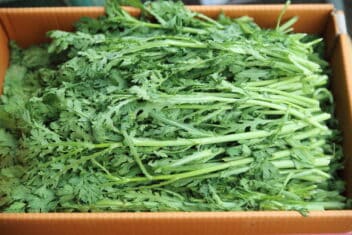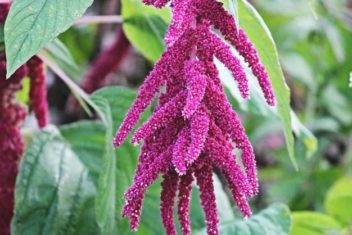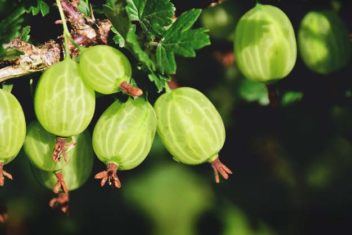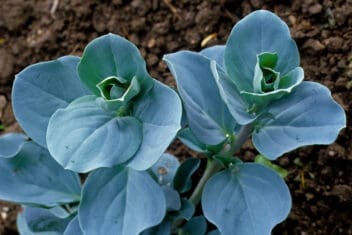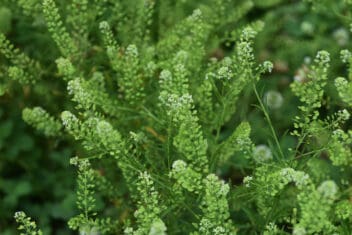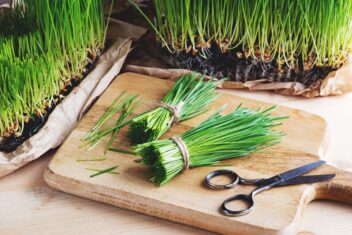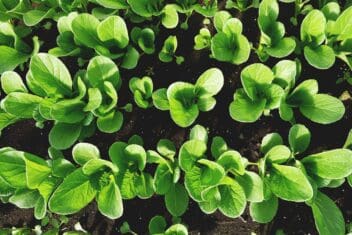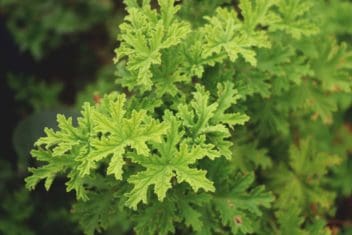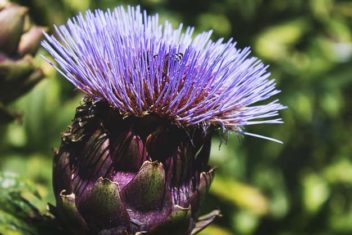Betony, (Stachys officinalis) also known as wood betony, bishops wort or purple betony, is a perennial herb that makes an appealing addition to your herb garden or flower bed. It has petite wrinkled leaves and pinkish-purple flowers that grow on spikes. Not only is it perfect for adding color to an area, but growing betony also means you’ll have a tasty tea on hand.
Betony, a member of the mint family, has a long history as a useful herb dating back to ancient Egypt and the middle ages. People once believed that the plant could ward off evil, so they wore amulets of betony to protect themselves. The Romans thought that betony could cure 47 different conditions and was somewhat of a panacea.
In modern times, some people use betony as either a replacement for black tea or as a part of a base for herbal tea. It can be used as a poultice for healing bruises and as a gargle for mouth ulcers, gum inflammation, and sore throats.
Betony is thought to possibly have a mild sedative effect and has been used in the past to soothe frayed nerves. You can also make a yellow dye using the leaves.
Even if you don’t plan to use it as anything but a pretty addition to the garden, betony is worth having around. It’s a bee attractor and its flavor will come through if you harvest your own honey.
Based on all its uses and the ease in which it grows, betony is a must-have in your herb or rock garden, particularly if you have a shady spot that could use a little color since betony can handle less sun that many plants.
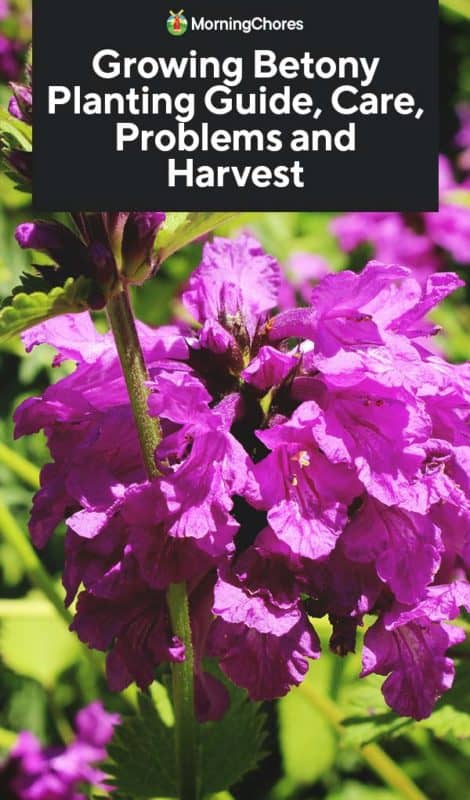
How to Plant Betony
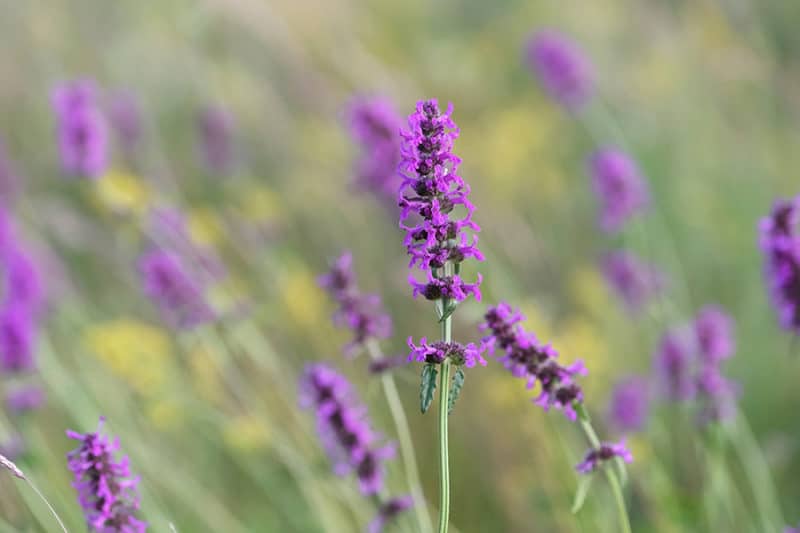
Betony is relatively fuss-free. Give it a little care, and you’ll have a lovely plant that grows vigorously, is attractive in the garden and can be used to make teas and tinctures.
Betony makes a superb addition to cottage gardens, edges, and borders, but if you’ve naturalized an area and are letting it grow wild, betony is perfect for that too.
Zones
Betony is a hardy perennial that grows in zones 4-8. It prefers cooler spots.
Sun Requirements
I’ve managed to grow betony well in full sun, but if you live in a warm location, grow it in partial sun to full shade.
Soil Requirements
Betony needs soil that’s rich in organic matter. The earth also needs to be loamy and well-draining.
Soil can be acid, neutral or alkaline – betony isn’t fussy. I’ve even managed to grow betony in clay soil, though it was a little stunted.
When to Plant
Betony should be planted in early fall or late summer. Germination is often improved with a cooler winter, providing an extended floral display the next summer, so if you live in an area with warmer winters, plant it in late winter.
Container Planting
Betony grows well in containers as long as you use a good quality potting mix and feed the plant regularly. Betony blooms for quite a few months so it needs to be well fed to maintain its color and vitality. Once planted, water well, but don’t soak the potting mix. Try not to allow the container to dry out.
Germinating Seeds
You can sow betony directly into the garden. I prefer to plant seeds indoors and use cold, moist stratification. I do this in early spring and plant out mid to late spring. A little frost won’t hurt tender betony plants, but protect them from a major freeze.
Plant two seeds in a small pot. Use a good quality seed raising mix, not soil. Spray the mix to keep it moist and place in the fridge for three weeks.
Don’t let the seed raising mix dry out. Check the pots regularly and mist if necessary, but don’t soak the pots or the seeds may rot.
Two weeks after stratification, germination should be completed and you can remove the pots from the fridge and place in a warmer area of the house until you’re ready to plant it in a permanent home.
Spacing
Betony is quite compact, so group multiple plants to maximize the visual impact. Place plants 12 to 18 inches apart. Betony can grow from anywhere between 9 inches and 3 feet tall.
If you’re harvesting betony for herbal tea, plant a minimum of three.
Caring for Betony
Betony is a fuss-free herb, but it will suffer if it’s too wet or too dry, or if the soil is deficient in organic matter.
Betony self-seeds and blooms in mid to late summer.
Fertilizer
I’ve never fertilized betony after planting it. I make sure the soil is well fed with rich organic matter before putting plants in the ground.
If the plant looks like it’s struggling and it has plenty of water and not too much sun, use a liquid fertilizer that is well balanced or use a slow-release fertilizer when planting.
Watering
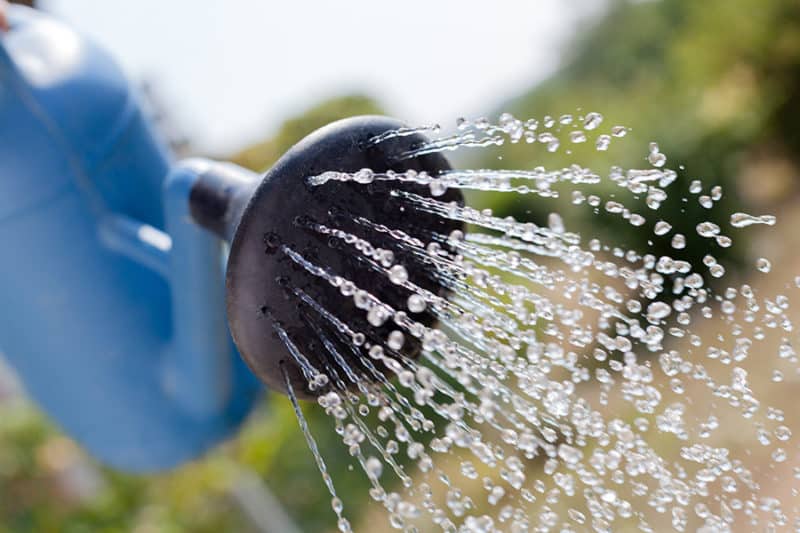
Betony is drought tolerant, but it’s best to water it once a week. Give it a deep watering at the roots. Allow the surface of the soil to dry out a little in between watering.
Pruning
You don’t need to prune betony. Even when the flowers begin to fall it will hold its shape and provide structure in the garden landscape. It benefits from deadheading, however.
Betony self-seeds. It’s not prolific, but more plants will appear each year. It might take two to three years, but betony will reach critical mass and need dividing. Dig up a clump, split the plant and replant one half.
Companion Plants for Growing Betony
The best companions for growing betony are:
- Coneflower
- Sea holly
- Russian sage
- Stonecrop
- Hardy geranium
- Mint
Don’t plant betony near:
Common Problems and Solutions for Growing Betony
Betony is one of the most pest-resistant herbs I’ve grown and I’ve had few issues. Still, you’ll want to watch out for a few things.
Slugs and Snails
Is there any plant that slugs and snails don’t eat? If their population gets too big, snails and slugs can decimate plants overnight. Lay down slug pellets, and go out at night to handpick the little pests and squash them.
Downy Mildew
Sometimes called downy mold, this disease is common in humid areas. It can attack any plant, but I’ve found betony to be particularly susceptible.
Downey mildew grows on and in the leaves, resulting in yellowing spots. It lives off the plant’s water supply. Neem oil is the only thing I use for downy mildew and it works well. You’ll also want to keep plants staked and well-spaced if you struggle with mildew.
Whiteflies
Probably one of the most prolific bugs in the garden. Use neem oil to prevent the flies from laying eggs on the leaves.
Harvesting and Using Betony
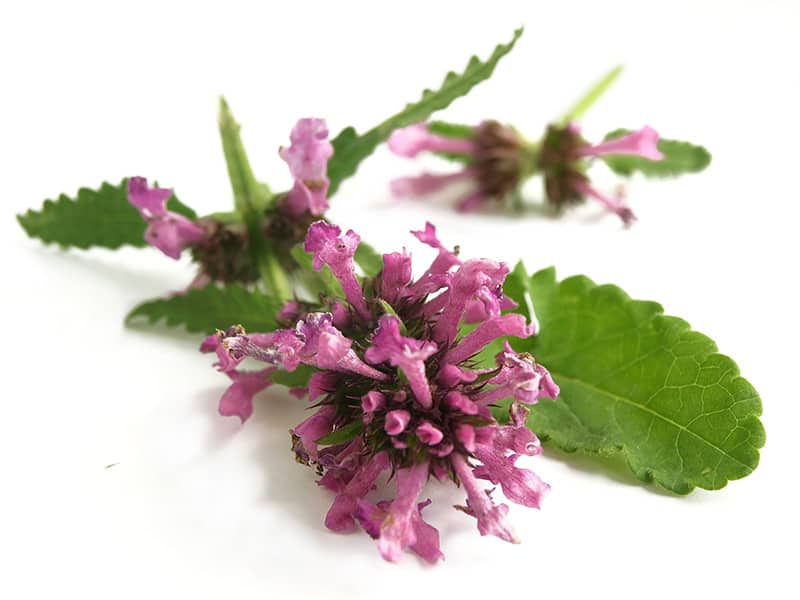
You can harvest the whole top of the plant – leaving about three inches – and it will regrow. Or you can harvest the leaves to use as a tea or infusion. Harvest before the bloom in summer if using the leaves for tea.
You can use the leaves, flowers, and stalks of the plant either dried or fresh. Use dried betony on its own or add it to other dried herbs to use as a tonic and refresher.
Some evidence suggests that betony is good for migraines and anxiety. Betony flowers are also gorgeous in dried flower arrangements.
Whether you’re growing betony to use as a tea, for cut flowers or simply as an attractive, colorful herb in the garden, you’ll find it simple to grow, not fussy and hardy as can be.

